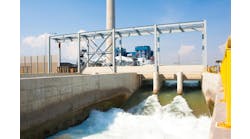Laboratory information management systems (LIMS) are widely used in most of the process industries. However, according to a recent survey of end-users in the process and hybrid industries, existing LIMS have some shortcomings that need to be addressed.*
For example, the integration of LIMS with plant and enterprise systems lags other mainstream applications. Analytical data produced in the plant are not always captured by the LIMS, and a considerable amount of the analytical data captured still is not captured automatically, leaving room for missed data or error.
Addressing modern needs
The LIMS concept has been around for decades. As most in the chemical industry know, LIMS originally were focused on organizing laboratory data and analysis performed in the plant lab. As plants evolved, requirements for laboratory analysis increased and expanded beyond the traditional lab. Product quality considerations, as well as regulatory compliance issues, have forced manufacturers not only to collect more data, but also to make it available to a growing number of interested parties.
Collaborative manufacturing is ushering in a new era in which agility is increasingly important. Companies need to be able to maximize the use of their assets ," not only to make the best quality product every time, but also to change quickly between products.
Therefore, the survey asked users how well the LIMS concept has evolved to cover related requirements beyond the lab.
Survey results
Most of the survey respondents were from the chemical, refining or oil and gas industries. Other process industries, including pharmaceutical, pulp and paper, water and waste, food and beverage, and mining and metals, also contributed to the survey.
Two-thirds of those surveyed felt their LIMS was adequate, with more than 15 percent saying their systems were "leading edge." Nearly one-third, however, believed their systems were inadequate or at least in need of improvement.
Respondents also were asked to estimate the return on investment over a five-year period if their systems were improved to the level of "modern enterprisewide" systems. The responses ranged from no expected change to well over a 100 percent improvement, with the mean falling into the 20 percent to 30 percent range. What was surprising was that even those who thought their systems were consistent with industry standards could see significant benefits by improving their LIMS.
When asked to allocate the benefits they expected across several potential areas, product quality was the most-anticipated benefit. Improvements in labor utilization were expected to create nearly 20 percent of the potential benefits from a modern enterprisewide LIMS. Improvements related to raw materials were not expected to contribute to a significant share of the benefits.
More than 13 percent of the improvements related to LIMS modernization were expected to come from the production cycle. With the need for greater agility, this is not surprising. Regulatory compliance was expected to account for nearly 13 percent on average, but came in significantly higher at nearly 22 percent ," largely as a result of pharmaceutical and food and beverage industry responses.
Several respondents indicated that they had no linkage between their LIMS and any other system in the plant or beyond. Maintenance systems had the worst linkage reported, with an average of 70 percent showing no link at all and none with complete electronic linkage between LIMS and maintenance systems. About half the LIMS had no linkage to planning, enterprise resource planning, service or logistic types of systems. With the exception of control systems, the average of all other systems having complete linkage to LIMS was less than 15 percent, with maintenance and design having no complete linkages established.
Corporate engineering and research functions had the greatest access to LIMS data, with more than 50 percent of the data available. Corporate management had the lowest, at about 40 percent
Conclusions
Users indicated that the top problem with their current LIMS is integration, followed by complexity and maintenance. Although many started with commercially available LIMS software, they were forced to customize the software for each facility, adding to the complexity and maintenance efforts.
LIMS suppliers need to address all three of these top issues. In the coming collaborative manufacturing era, quality data contained in the LIMS will be as vital to manufacturing success as production yields will be. The speed at which production decisions will be made will require LIMS to be integrated and accessible in real-time within the plants and throughout the enterprise.
Hill is vice president, Collaborative Manufacturing, for the ARC Advisory Group, Dedham, Mass. Contact him at [email protected].
